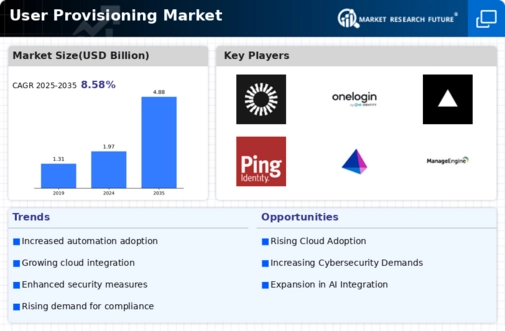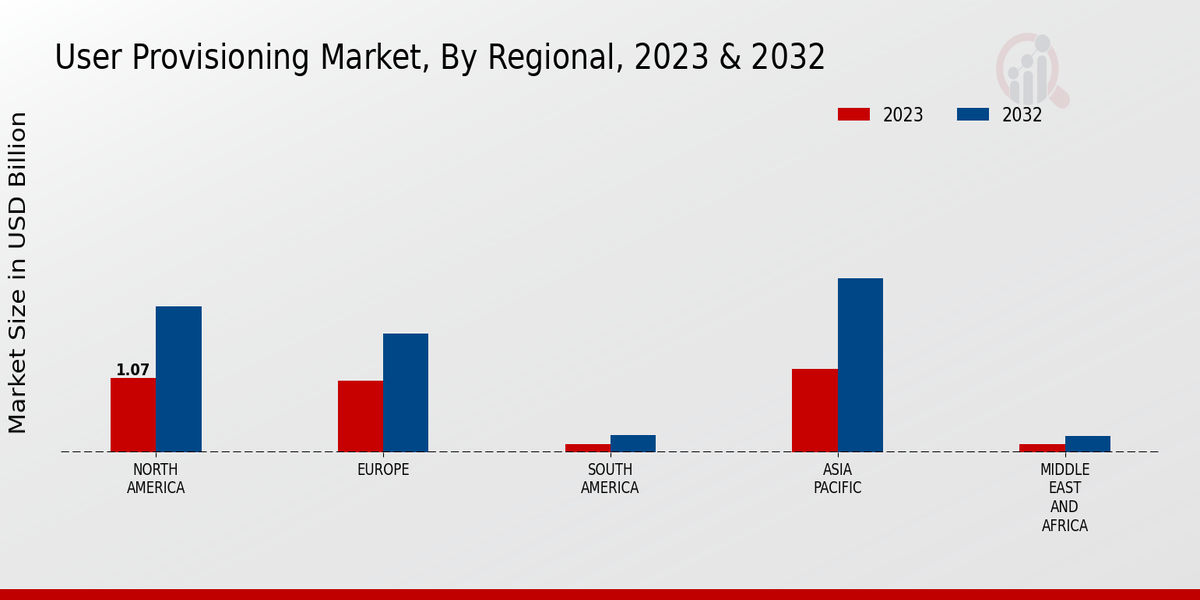Market Growth Projections
Increased Cybersecurity Threats
The Global User Provisioning Market Industry is significantly influenced by the rising incidence of cybersecurity threats. As organizations face an escalating number of cyberattacks, there is a pressing need for enhanced security measures in user provisioning processes. Effective user management systems help mitigate risks by ensuring that only authorized personnel have access to critical resources. This heightened awareness of cybersecurity is driving investments in user provisioning technologies, which are designed to bolster security protocols and protect sensitive data. As a result, the market is projected to grow at a CAGR of 8.59% from 2025 to 2035, reflecting the urgent need for robust security solutions.
Regulatory Compliance Requirements
Regulatory compliance continues to be a pivotal driver within the Global User Provisioning Market Industry. Organizations are compelled to adhere to stringent data protection regulations, such as GDPR and HIPAA, which necessitate robust user provisioning solutions. These regulations mandate that companies implement effective identity and access management systems to safeguard sensitive information. As compliance requirements evolve, businesses are investing in user provisioning technologies to ensure they meet legal obligations, thereby mitigating risks associated with data breaches. This focus on compliance is expected to contribute to the market's growth trajectory, as organizations prioritize security and accountability.
Growing Need for Workforce Mobility
The Global User Provisioning Market Industry is propelled by the growing need for workforce mobility. As remote work becomes more prevalent, organizations require user provisioning solutions that support flexible access to resources from various locations. This demand for mobility necessitates the implementation of secure and efficient user management systems that can adapt to changing work environments. Companies are increasingly investing in technologies that facilitate seamless access while maintaining stringent security measures. This trend is likely to drive the market's expansion, as businesses seek to empower their workforce with the tools necessary for productivity in a mobile-centric world.
Integration of Artificial Intelligence
The integration of artificial intelligence (AI) into user provisioning processes is emerging as a transformative factor in the Global User Provisioning Market Industry. AI technologies facilitate automated user management, enabling organizations to streamline onboarding and offboarding procedures. This automation not only enhances efficiency but also reduces the likelihood of human error, which can lead to security vulnerabilities. As businesses increasingly recognize the benefits of AI-driven solutions, investments in these technologies are expected to rise. The market's growth is anticipated to accelerate, with projections indicating a value of 4.88 USD Billion by 2035, underscoring the potential of AI in reshaping user provisioning.
Rising Demand for Cloud-Based Solutions
The Global User Provisioning Market Industry experiences a notable surge in demand for cloud-based solutions. Organizations increasingly adopt cloud technologies to enhance operational efficiency and scalability. As of 2024, the market is valued at 1.97 USD Billion, reflecting a shift towards more flexible and cost-effective user management systems. This trend is driven by the need for remote access and collaboration tools, which are essential in today's digital landscape. The transition to cloud services allows businesses to streamline user provisioning processes, thereby reducing administrative overhead and improving security protocols.















